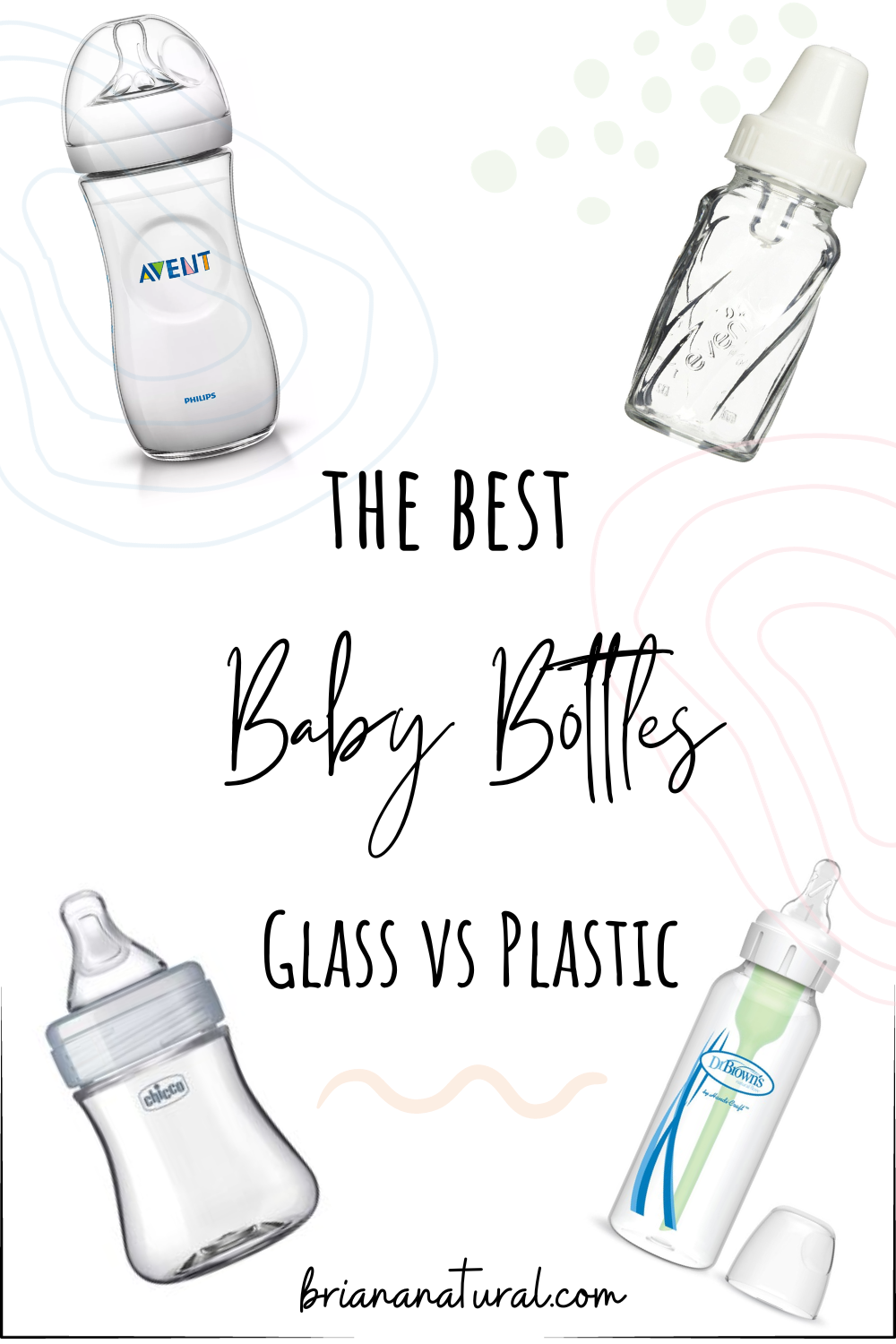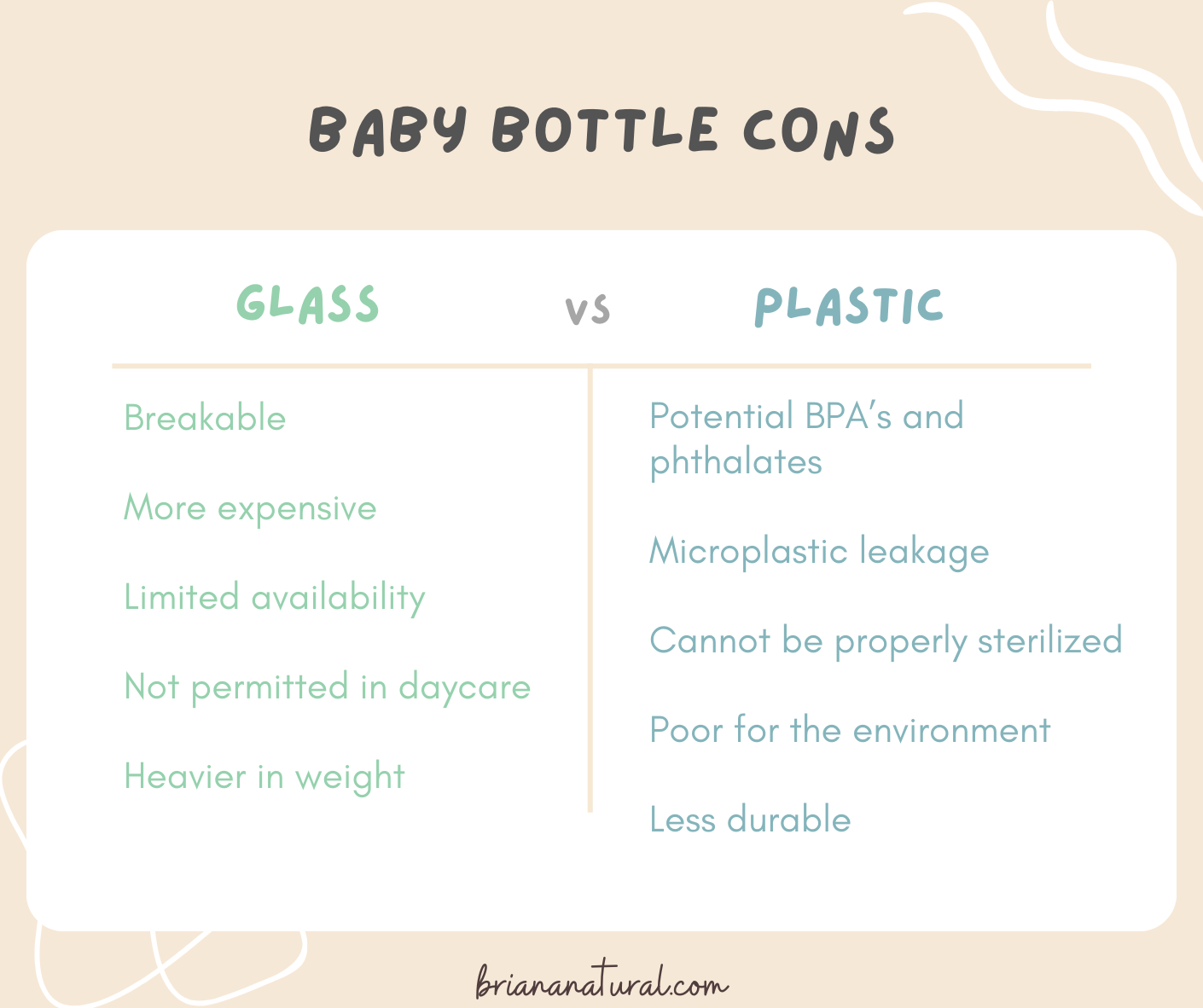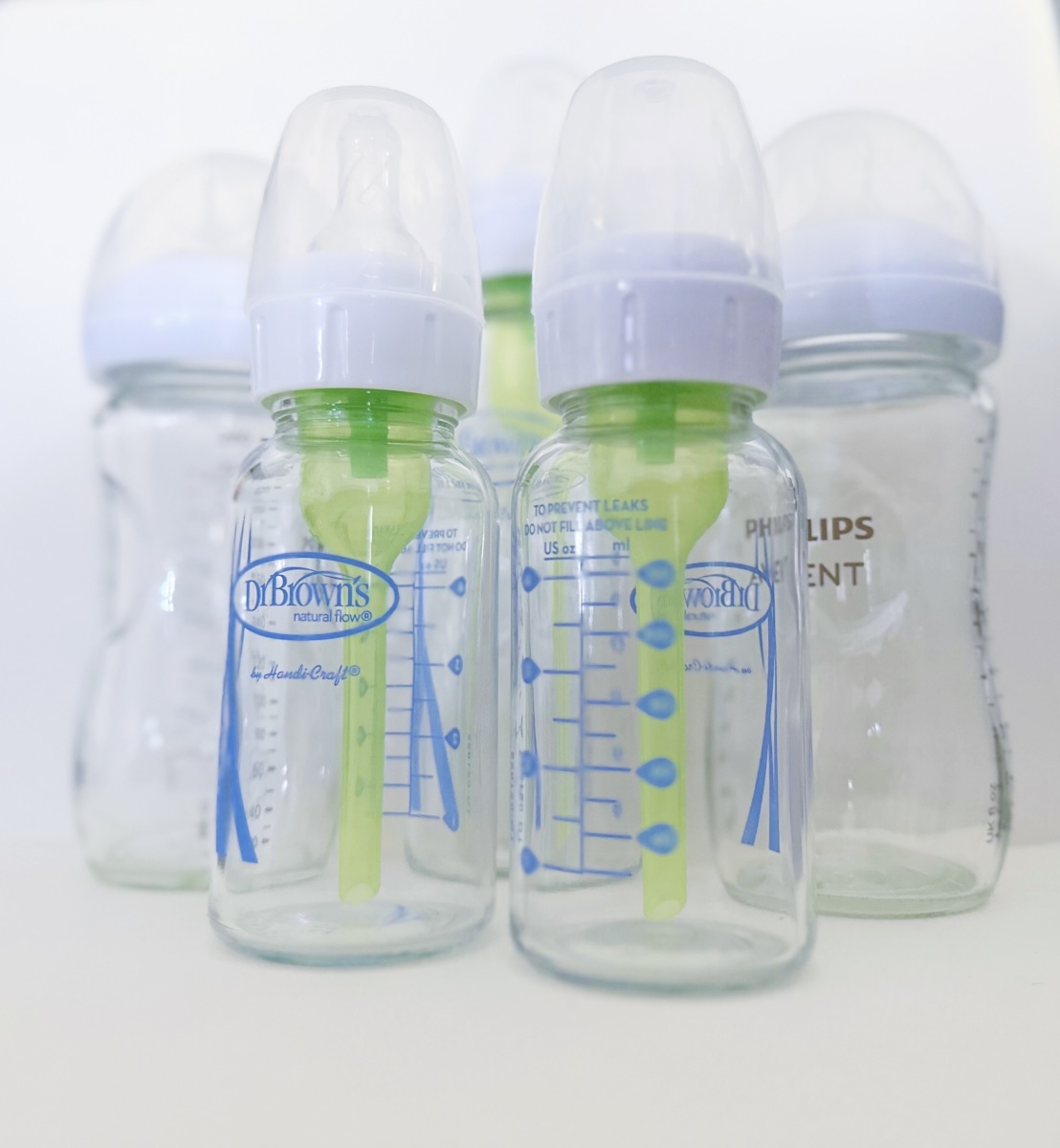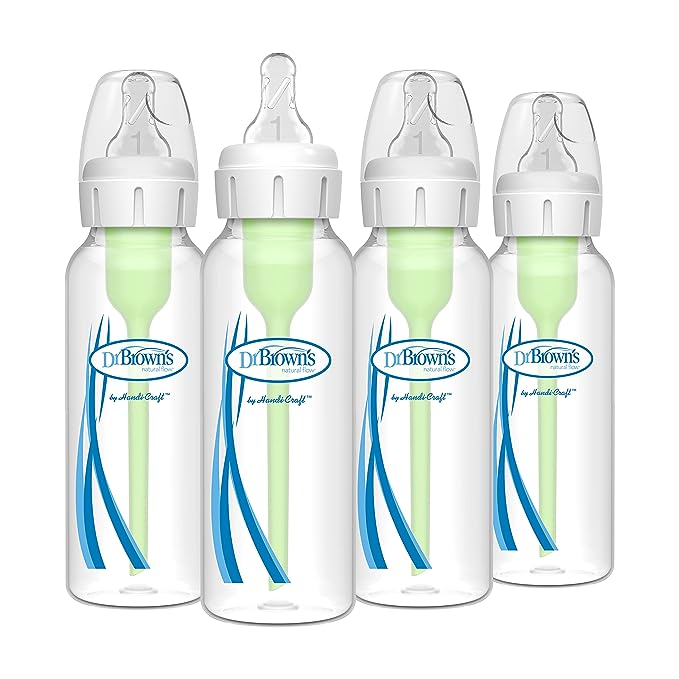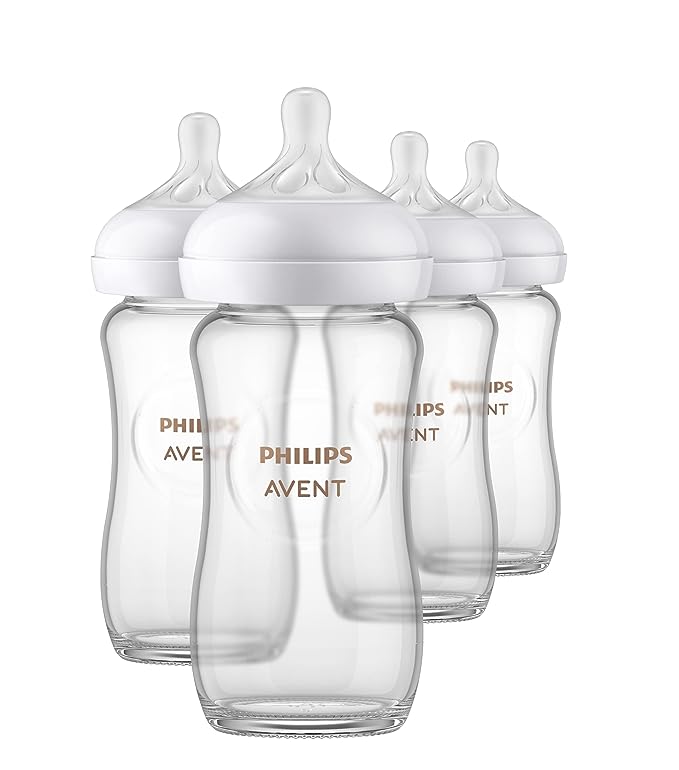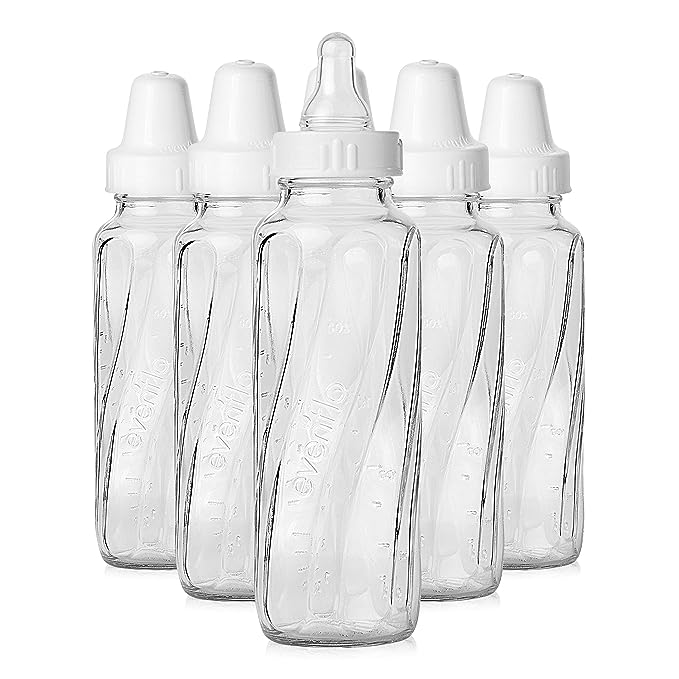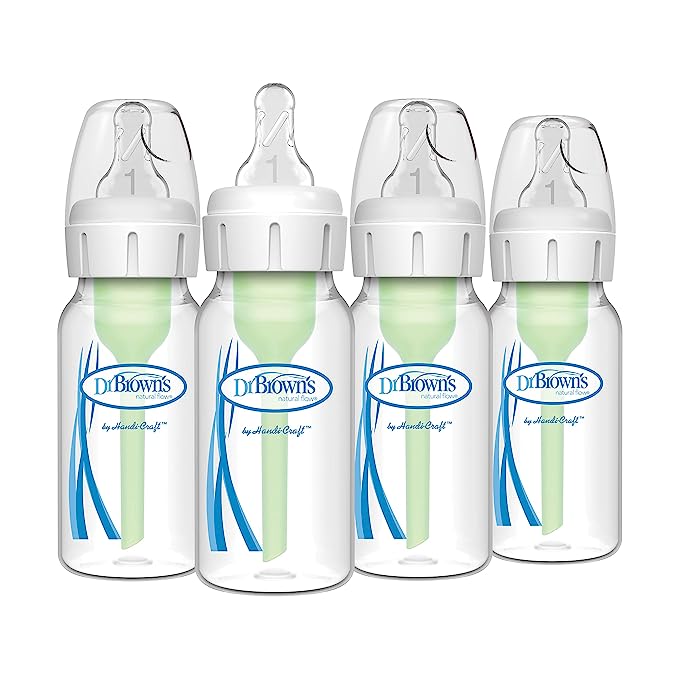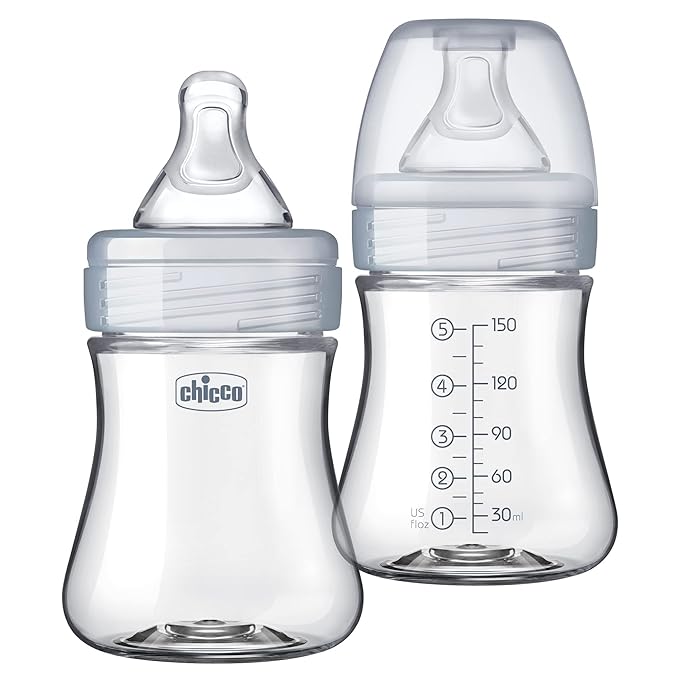Plastic vs Glass: Which Baby Bottles are Best?
In a market with COUNTLESS options for every type of feeding supply imaginable, how do you know which baby bottles are best? We know we need the basics; several 4 oz and 8 oz bottles, but with so many options, it’s hard to weed out what will work best for baby. In this post, we will go over the best baby bottles I’ve tried and what to look out for when making your choice.
Plastic Bottles vs. Glass Bottles
When baby comes into this world, they will need to eat every 3 hours so it’s important to choose a quality brand of baby bottles that will hold up for all of those feedings. We also want to make sure our feeding supplies are safe for baby, of course! This is going to be your most important baby product so it’s important to know the risks associated with each type of bottle material as well as the benefits they offer.
Plastic Bottles
Let’s start with the benefits! The first thing you will see when shopping for bottles is the price difference. Plastic bottles are much more cost efficient than glass mainly due to a lower cost of production. This influences inventory since the bottles are cheaper to produce which allows them to be more readily available for consumers. Another perk of the plastic bottle is that it’s lightweight and easier for baby to hold. Lastly, it’s less of a hazard. This is the reason behind many daycares (including my sons) requiring parents to only send plastic rather than glass bottles.
Now it’s time for the downsides. I’m sure you’ve heard it a million times before. Plastics are terrible for the environment for a multitude of reasons but for the sake of this post, let’s focus on why it can be concerning when it comes to baby. The main culprit when it comes to feeding supplies is BPA. BPA is present in some plastic bottle brands and can lead to nerve and behavioral issues in babies if consumed1. The FDA does a good job of regulating how much is allowable to be considered safe, but why risk it?
We have made a lot of progress in recent times with the removal of BPA from the plastic bottle manufacturing process. Most bottles are now manufactured without it. However, many people will reuse old bottles that are years old or passed down from a friend so make sure to be mindful of the brand and age of your products.
The next concern is microplastics which are defined in general as plastics too small for the eye to see. Microplastics can leak into milk when the bottle is heated and as we know, most babies will need their bottles heated several times per day. What’s the concern for babies consuming microplastics? As of now, there has not been enough research performed to identify exactly what impact a lifetime of microplastic consumption can have on human health. What we do know is that in countries where breastfeeding or glass bottles are more popular babies have lower levels of microplastics in their system. One study reported that bottle-fed babies have been found to consume over 1.5 million microplastic particles2.
Lastly, let’s talk about the cleaning process. Sterilization involves very high temperatures that most plastics simply cannot withstand. The problem with this is that if they cannot undergo the proper sterilization techniques, all bacteria may not be eliminated from the bottle. Also, I cannot tell you how many times I’ve heard other mamas tell me about their melted plastic baby bottles!
Glass Bottles
Glass bottles are my pick for many reasons. First, it’s the absence of microplastics, BPA’s and phthalates that have many risks associated with them as described above. Next is the ability to deep clean. Glass can withstand very high sterilization temperatures to destroy every germ or bacteria imaginable. You don’t have to worry about melting or anything leeching out of a glass bottle that could possibly enter the milk, which is great for a mom as anxious as myself! Lastly is the durability of glass bottles. They can last years due to their durability and do not break down over time the way plastic does.
Now for the cons. Glass bottles break, as plastic does not. I don’t need to discuss the dangers of broken glass here, but it is the reason behind most daycare centers not allowing glass in their facilities due to the safety risks. There are silicone sleeves that wrap around glass bottles for parents worried about this issue. Glass bottles are also heavy. A baby learning how to hold their own bottle will struggle with this issue as a plastic bottle is much lighter in weight and easier to hold.
Last is the issue of price and availability. I did a price comparison of several brands and found that on average, glass bottles are 20-30% more expensive than plastic. It may be pricey if you’re buying several bottles, but keep in mind that these bottles can be used for years.
What You Can Do
Use glass bottles. If you are in a circumstance where you MUST use plastic (such as me for daycare), choose a quality brand that does not manufacture with BPA. I’ve listed a few below for you to check out, but I use Dr. Brow’s Anti-Colic bottles.
Buy a silicone sleeve to prevent breaks and add grip to glass bottles.
If you must use plastic, avoid old bottles and look for brands that are BPA free. Look at the bottom of bottle and avoid the ones that have a number 7. This usually means that BPA is present.
Avoid heating milk in plastic bottles. When I need to use plastic bottles, I always request that the bottle be removed from the fridge for 15-20 minutes before feeding to baby so it gets to room temperature instead of heating.
Some daycares may allow glass lined bottles. These bottles are glass on the inner portion that is exposed to the milk but are plastic on the outside. They are less likely to break and shatter than glass bottles but don’t expose the milk to plastic.
My Favorites
Best Anti Colic Glass Bottle
Dr. Brown’s Glass Natural Flow Anti Colic Options Bottle – 8 oz 2 pack
Dr. Brown’s Glass Natural Flow Anti Colic Options Bottle – 4 oz 2 pack
Dr. Brown’s 8 oz silicone sleeve
Dr Brown’s 4 oz silicone sleeve
They’re glass, help with colic, and are made by a quality brand. This is what I use outside of daycare. As for the silicone sleeves that prevent breaks, check out all of the colors they have as there are many options!
Best Glass Bottles for Breastfeeding Babies
Philips AVENT Glass Natural Baby Bottle – 8 oz 4 pack
Philips AVENT Glass Natural Baby Bottle – 4 oz 4 pack
No internal stem and the anti colic system on these is purely from the nipple which means less parts to clean! This nipple is also wide and great for breast fed babies.
Best Affordable Glass Bottles
Evenflo Feeding Classic Glass Twist Bottles – 8 oz 6 pack
Evenflo Feeding Classic Glass Twist Bottles – 4 oz 6 pack
The twist design on these make holding bottles easier for you and baby. These are also half the price compared to other top brands which make them great for a family on a budget.
Best BPA Free Plastic Bottles
Dr. Brown’s Natural Flow Anti Colic Options – 8 oz 4 pack
Dr. Brown’s Natural Flow Anti Colic Options – 4 oz 4 pack
For those who use daycares that require plastic, I recommend Dr. Brown’s. They do quality testing to ensure their products do not contain BPA or phthalates.
Best Hybrid Bottle
Chicco Duo Hybrid Baby Bottle – 5 oz 2 pack
Here is an all-around option that removes the risks that come with plastic bottles by making the lining glass. This is a great innovation to prevent breakage!
The choice between plastic or glass baby bottles ultimately relies on your lifestyle and priorities. Both types of bottles have their advantages and merits. What matters most is prioritizing the safety of your little one by being aware of risks associated with different baby products. Whichever you decide, always ensure that priorities include sterilization, proper maintenance, and cleanliness to keep baby happy and healthy!
Sources
